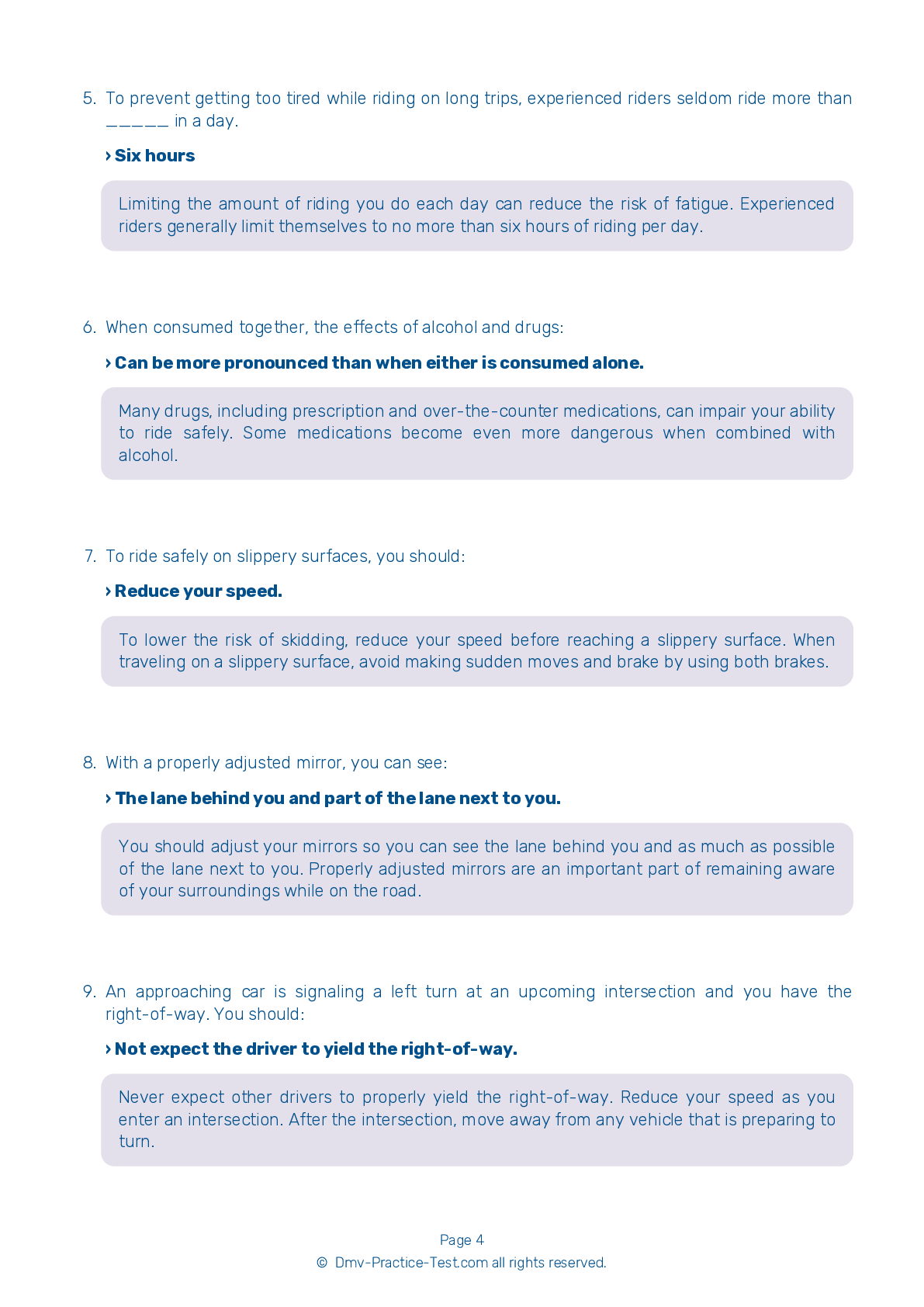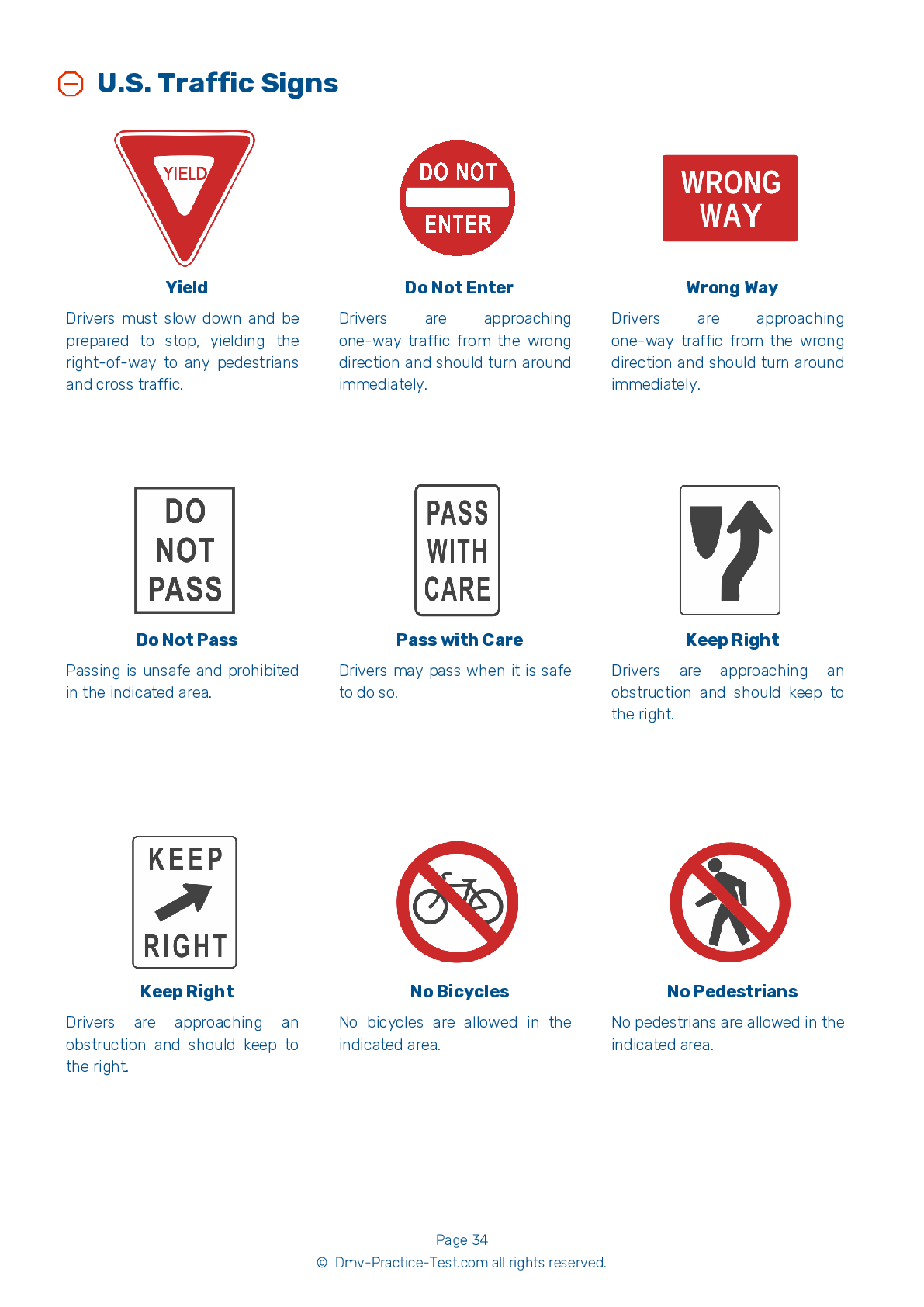Motorcycle Test | License PA 2026 | FREE Online Practice! #11 Page 3 of 4
Take this FREE motorcycle test (license in PA 2026) to check your knowledge of the road rules. To improve your results, download a motorcycle handbook online, study theory, and practice for free on our website. Still worried about how to get a motorcycle license in Pennsylvania in 2026? Check our website for more sample tests, train as much as possible, and boost your grades!
11 . Long-term exposure to wind noise:
Long-term exposure to wind noise while riding can cause hearing damage, even if you wear a helmet. Use of proper hearing protection is recommended to prevent damage.
12 . When adjusting your mirrors to carry a passenger, the passenger should:
When carrying a passenger, your motorcycle will sit at a somewhat different angle due to the passenger's weight. While your passenger sits on the seat with you, adjust the mirrors and headlight according to the change in angle.
13 . It is recommended that you take a curve by beginning on the outside of the curve, moving to the inside of the curve, and exiting on the outside of the curve. An alternate option is to:
If there is no traffic present, it is recommended that riders take a curve by beginning on the outside of the curve, moving to the inside of the curve, and exiting on the outside of the curve. An alternate option is to start the curve in the center of the lane and remain in the center throughout the curve. Be aware of changing road and traffic conditions and adjust as necessary.
14 . On a paved, two-lane road, sand and gravel are most likely to collect:
Dirt and gravel collect along the sides of the road, especially on curves and ramps leading to and from highways. Use extra caution when riding over loose dirt and gravel.
15 . A primary cause of single-vehicle motorcycle collisions is:
A primary cause of single-vehicle collisions is motorcyclists running too wide in a curve or turn. Taking a turn too wide can cause a motorcycle to leave the roadway or collide with an object.
See the exact questions that will be on the 2026 Pennsylvania DMV exam.
99.2% of people who use the cheat sheet pass the FIRST TIME
Jeneen was tired of paying $5/gallon. She got herself a scooter that required the motorcycle license. She studyed the motorcycle test cheat sheet and passed her test the next day!
Christopher tells us how he knew nothing prior to obtaining the motorcycle study guide, and he only got one question wrong because he clicked on the wrong answer by mistake.



